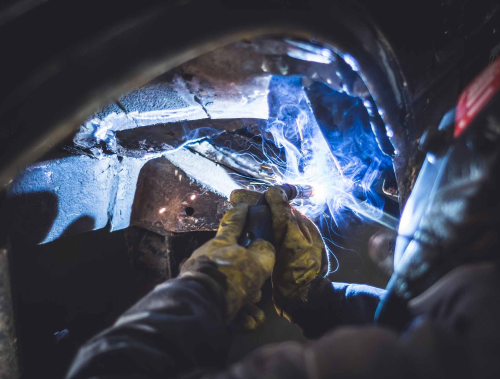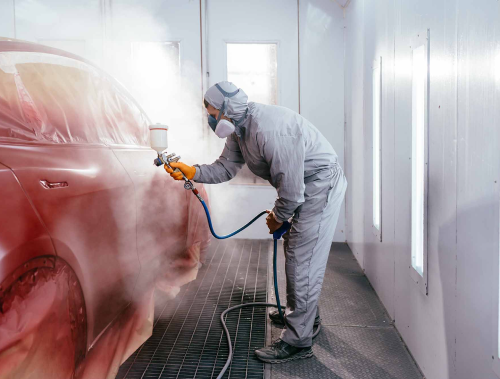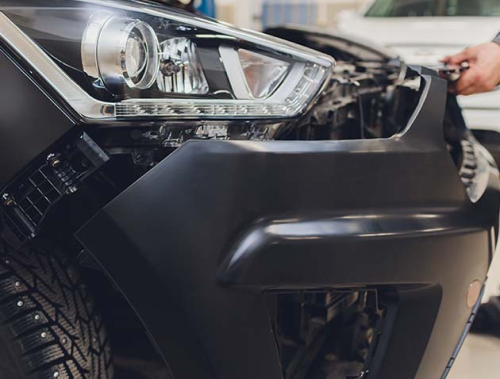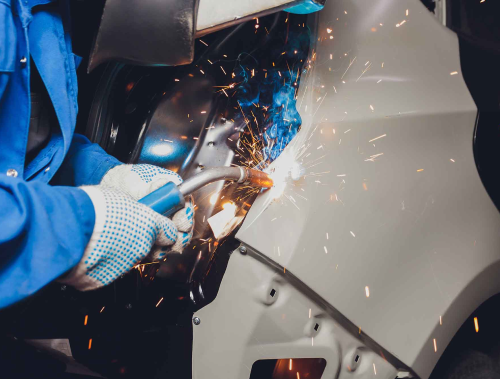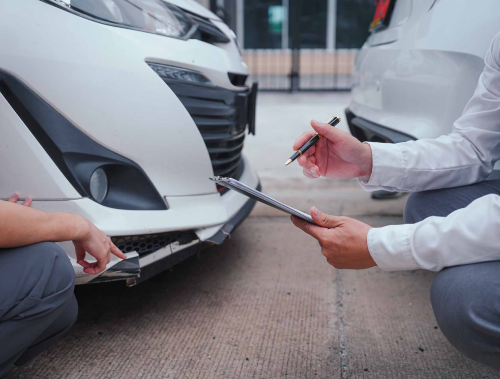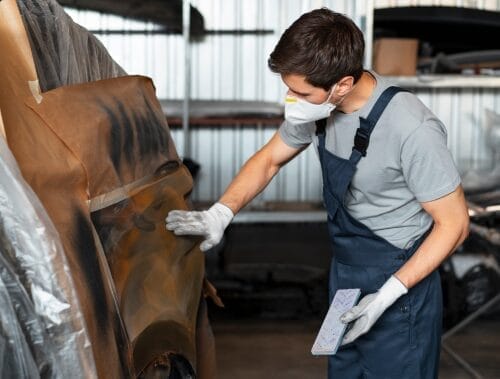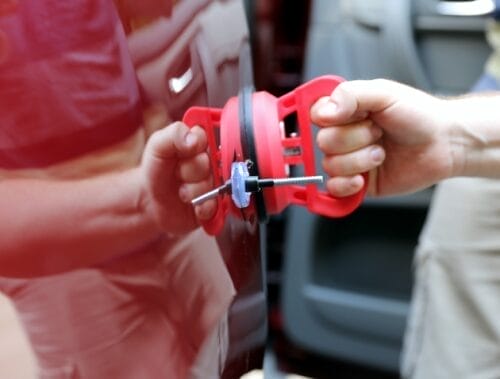Properly storing your car during the off-season is essential to maintain its condition and ensure it’s ready to go when you need it again. Whether you’re storing your car for the winter or an extended period, taking the right steps can prevent damage and keep it in top shape. This guide will cover everything you need to know about off-season car storage.
Preparing the Vehicle
Taking the time to prepare your vehicle before storage can prevent many common issues that arise from long periods of inactivity. This section outlines the essential steps to ensure your car remains in optimal condition while in storage.
Thorough Cleaning
Before storing your car, it’s crucial to clean it thoroughly both inside and out.
- Clean the Exterior: Wash your car thoroughly to remove dirt, grime, and any potential corrosive substances like bird droppings or road salt. A clean car reduces the risk of rust and paint damage during storage.
- Vacuum and Clean the Interior: Clean the interior to prevent mold and odors. Remove any trash, vacuum the carpets and seats, and clean all surfaces. Consider using an air freshener or moisture absorber to keep the interior fresh.
Fluid Maintenance
Proper fluid maintenance is vital for preventing engine damage and ensuring all systems remain functional.
- Change the Oil and Filter: Change the oil and filter to prevent engine corrosion. Old oil can contain contaminants that could damage the engine if left sitting for a long time.
- Top Off All Fluids: Ensure all fluids are topped off, including coolant, brake fluid, and windshield washer fluid. This helps prevent moisture build-up and keeps all systems ready for use.
- Use Fuel Stabilizer: Add a fuel stabilizer to your gas tank to prevent the gasoline from degrading. Run the engine for a few minutes to ensure the stabilizer circulates through the system.
Battery Care
Proper battery care can prevent issues when it’s time to use your car again.
- Disconnect the Battery: Disconnect the battery to prevent drainage. If you’re storing the car for a very long time, remove the battery entirely and store it in a cool, dry place.
- Use a Trickle Charger or Battery Maintainer: To keep the battery charged, use a trickle charger or battery maintainer. These devices provide a low, steady charge to keep the battery in good condition.
Tire Care
Taking care of your tires is essential to prevent flat spots and other issues.
- Inflate Tires to Recommended Pressure: Inflate your tires to the recommended pressure to prevent flat spots. If a car sits for too long on under-inflated tires, they can develop flat areas that affect performance.
- Consider Using Jack Stands: For long-term storage, consider placing the car on jack stands. This relieves pressure on the tires and suspension, preventing deformation and prolonging tire life.
Choosing a Storage Location
Selecting the right storage location can significantly impact the condition of your car during the off-season.
Indoor Storage
Indoor storage offers the best protection from the elements.
Storing your car indoors keeps it safe from weather, pests, and potential vandalism.
- Ensure the storage area is dry and well-ventilated.
- Use a garage or professional storage facility if available.
- Place a moisture absorber inside the car to prevent mold and mildew.
Outdoor Storage
If indoor storage isn’t an option, take extra precautions to protect your car outdoors.
- Necessary Precautions for Outdoor Storage: Use a weatherproof car cover designed to fit your vehicle. This will protect it from rain, snow, sun, and debris.
- Use of Weatherproof Car Covers: A good car cover can protect against the elements. Look for covers that are breathable to prevent moisture buildup underneath and that have UV protection to guard against sun damage.
Preventing Rodent Infestation
Rodents can cause significant damage to your vehicle if they find a way in. To deter them, inspect the storage area and seal any potential entry points.
Seal Potential Entry Points
Inspect the storage area and seal any potential entry points, such as gaps around doors, windows, and vents. Pay special attention to small cracks and openings that might not be immediately noticeable.
Use Rodent Repellents and Traps
Set up rodent repellents and traps around the storage area. Natural repellents like peppermint oil or commercial rodent repellent sprays can help keep these pests away. Additionally, place traps in strategic locations to catch any rodents that might attempt to enter.
Additional Protective Measures
To ensure your vehicle remains in top condition during storage, consider these additional protective measures.
Fuel Tank Level
There are differing opinions on the optimal fuel level for stored vehicles.
Some experts recommend keeping the gas tank full to prevent condensation and rust, while others suggest keeping it half-full. The best approach depends on your storage conditions and climate.
Regardless of the fuel level, adding a fuel stabilizer is essential. Fuel stabilizers prevent the gasoline from degrading and forming gum and varnish, which can clog the fuel system.
Avoiding Moisture Build-Up
Proper ventilation is crucial to prevent moisture-related issues.
A breathable car cover allows moisture to escape, preventing condensation that can lead to rust and mold. These covers protect your vehicle while allowing air circulation.
Avoid using plastic covers as they can trap moisture underneath, leading to potential damage. Stick to covers made from breathable materials to ensure your car remains dry and protected.
Occasional Starting
Starting the car occasionally can keep the battery charged and the engine lubricated, but it also introduces moisture into the exhaust system and may not be necessary if the car is stored properly.
If you choose to start your car occasionally, follow these guidelines:
- Start the car every two weeks.
- Let it run for 15-20 minutes to allow the engine to reach operating temperature.
- Avoid short starts that don’t allow the engine to warm up fully.
Maintenance During Storage
Even while in storage, it’s important to check your car periodically for any signs of wear or damage.
Regular Inspections
- Regular inspections can help catch potential issues early.
- Look for leaks, check the tire pressure, and ensure no pests have made their way inside.
- Create a schedule for regular inspections. This helps catch any potential issues early and keeps your car in good condition throughout the storage period.
Ventilation
Proper ventilation is crucial to prevent mold and mildew. Ensure that the storage area is well-ventilated, with fresh air circulating around the vehicle.
- Use fans or dehumidifiers to maintain air circulation.
- Keep windows slightly cracked (if safe to do so) to allow air to flow.
- Avoid sealing the car tightly in enclosed spaces.
Preparing for Use After Storage
When it’s time to use your car again, take these steps to ensure everything is in working order.
Initial Inspection
- Check for any fluid leaks, ensure the tire pressure is correct, and verify that the battery is charged.
- Look under the hood for any signs of rodent damage or nests. Check the oil level and other fluids, and ensure everything appears in good condition.
Gradual Reintroduction
- Start the car and let it idle for a few minutes. This allows the engine oil to circulate and lubricate the components before driving.
- Take the car for a short drive to ensure that the brakes, steering, and other systems are functioning correctly. Pay attention to any unusual noises or performance issues.
Conclusion
Proper off-season car storage involves thorough preparation, regular maintenance, and careful reintroduction. By following these steps, you can ensure your vehicle remains in excellent condition during extended storage periods.
Recap of Key Points for Proper Off-Season Car Storage
- Thoroughly clean the car inside and out.
- Maintain fluid levels and use fuel stabilizers.
- Care for the battery and tires.
- Choose the right storage location and prevent rodent infestation.
- Perform regular inspections and ensure proper ventilation.
- Gradually reintroduce the car to regular use after storage.
Taking the time to store your car correctly will protect your investment and ensure it remains reliable and ready to use when needed. Follow these best practices to maintain your vehicle’s longevity and performance.

